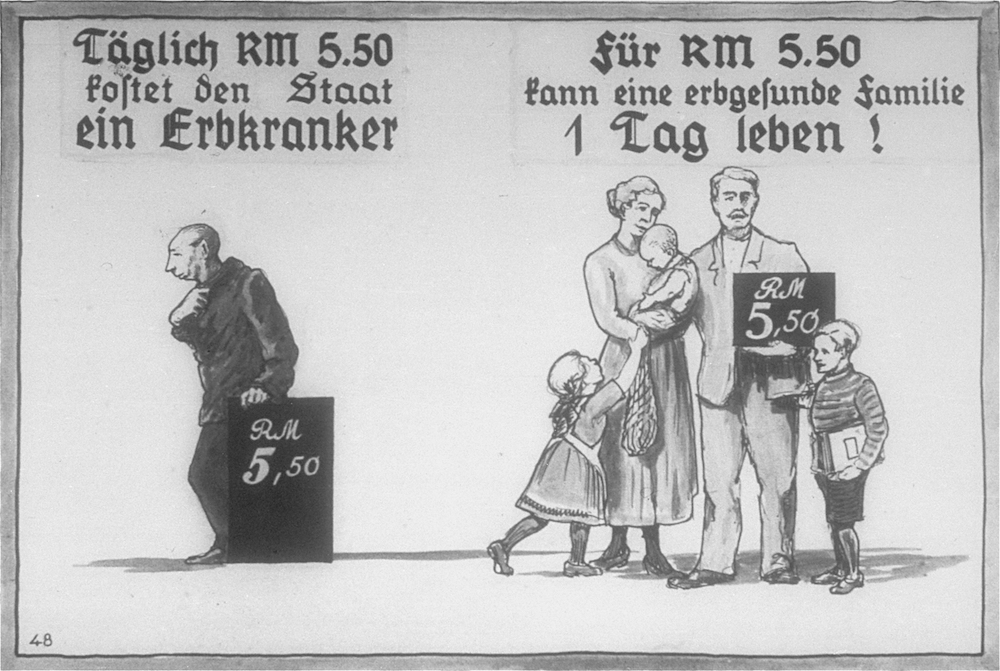Content Warning: Ableism, eugenics, pro-cure propaganda
The view of autism as a negative condition by society is not a new phenomenon. From the founder of ABA saying autistics are “not people in the psychological sense” to Autism Speaks calling it an “epidemic,” the Neurodiversity Movement has been utilized by the marginalized group to challenge those claims. However, there are some people hoping to prevent autism entirely. On July 18, Mark Blaxill, Toby Rogers, and Cynthia Nevison published a paper in the Journal of Autism and Developmental Disorders titled “Autism Tsunami: the Impact of Rising Prevalence on the Societal Cost of Autism in the United States.”
As mentioned in the Autism Speaks “Sounding the Alarm” documentary, the “tsunami” refers to a sudden surge of money that would be needed to provide services for autistic people. While it is important to address that issue, the framing of the paper is what’s problematic. “Future ASD (Autism Spectrum Disorder) costs increase dramatically: total base-case costs of $223 (175–271) billion/year are estimated in 2020,” the authors write in the abstract. “$589 billion/year in 2030, $1.36 trillion/year in 2040, and $5.54 (4.29–6.78) trillion/year by 2060, with substantial potential savings through ASD prevention.”
Since autism is an ingrained part of a person’s brain and not something that can be detached, a likely way of preventing that would be detecting autism in the womb and giving parents an option to abort the child. The Down syndrome population has decreased drastically through that method, as 100% of babies with the condition were aborted in Iceland between 2008-2012, and it’s possible the same measures would be taken towards autistic people. The UC Davis MIND Institute is already conducting experiments to detect autism through a mother’s antibodies before conception of a future child.
In that abstract, the authors’ rhetoric is most profound in the last sentence, where they state, “Rising prevalence, the shift from child to adult-dominated costs, the transfer of costs from parents onto government, and the soaring total costs raise pressing policy questions and demand an urgent focus on prevention strategies.” In other words, they are determined to prevent autistic people from being born to save money. Such an ideology dates to the eugenics movement, most notably during Adolf Hitler’s reign in Nazi Germany.

The picture above is a piece of Nazi propaganda from Germany during World War II. It’s meant to detail the financial burden disabled people place on society, with the disabled man on the left costing 5.50 Reichsmarks to be cared for, the same as the family of five on the right. This kind of scapegoating led to the “Law for the Prevention of Progeny with Hereditary Diseases” on July 14, 1933, which would sterilize German people with disabilities, according to the United States Holocaust Memorial Museum. Later in 1939, Hitler authorized “Operation T4,” which led to the murder of 70,000 Austrian and German disabled people. While the “Autism Tsunami” article does not outright promote such atrocious actions, the negative wording throughout paints autism as a problem needing to be eliminated rather than a group of people who are being failed by their government to get their needs met.
It’s difficult not to feel a sense of fear when the authors write “The cost patterns with autism are also unique in that sharply rising prevalence has created a massive wave of costs that will continue for decades if policymakers and the public fail to grasp the possibility and importance of prevention.” They depict the birth of autistic people like an apocalyptic prophecy, something that “strikes” in childhood, rather than a neurotype someone is born with where traits start becoming obvious around 18 months.
The statistics used in the paper are not scientifically sound either. For example, under the section “Parent Productivity Loss,” the authors state, “We assumed 75% loss of maternal productivity for children with severe ASD and 25% loss of maternal productivity for children with milder ASD.” There is no use of the scientific method, and they do not cite a source to support this claim. They at least admit the numbers are assumed (keep in mind, this paper was peer-reviewed by scientists).
There’s another reason why this paper is as flawed as it is. Two of the writers, Mark Blaxill and Toby Rogers, are avid anti-vaxxers. This video from C-SPAN includes Blaxill testifying against the government, arguing that autistic people did not exist at all until the 1930s, when Leo Kanner “discovered” autism (it can be argued that Grunya Sukhareva discovered the condition decades before him, with J. Langdon Down working with children that would be considered autistic todayeven further back in time). He openly exclaims his anti-vaccine theories in the open as well, despite the evidence that vaccines don’t cause autism. Blaxill also does not have any history of work in the medical field, as he graduated from Princeton and the Harvard Business School, where he received an MBA in the latter. Toby Rogers too also has no medical background, as he is a political economist and simply a father of an autistic child like Blaxill is. Cynthia Nevison is the only author with any scientific or medical background in the paper.
The truth is that before autism was used as a clinical term, children who would be given that label were put in institutions and not properly assessed. This article from Smithsonian Magazine explains that Kanner himself admitted that autism was “already there” and he did not discover it. It also showcases examples of people from centuries ago who would most certainly be considered autistic today.
It is rather questionable how people with no scientific background could publish a peer-reviewed paper in a legitimate scientific journal. Not only that, but the claims they make, which are based on theories and not discernable evidence, can create a false notion of fear in readers. “Autism Tsunami” is little more than fearmongering created by mostly parents devoid of any scientific background.
While a greater budget on autism services would significantly reduce the amount of need from autistic people over time, that idea is applicable to all disabilities; expanding the budget would simply be an acknowledgment of human rights, as disabled people are just as worthy of assistance and dignity as the rest of society.
Treating a disability as a scapegoat for economic collapse is not a new idea. But as humanity has observed in WWII, viewing disabled people as the problem rather than a lack of resources can only lead to a grim outcome for the group in question. One can only hope that recognizing this issue before it begins can change the fate of marginalized people forever.

Could you put a content warning on this post for extreme ableism, eugenics, and pro-cure propaganda?
Also, Icelandic children with Down syndrome are still being born. The stats only reflect the abortion rates of mothers who chose to get the prenatal test for it. Mothers who are against abortion on the basis of disability (which is a form of eugenics, as you probably know) would not have chosen to get the prenatal test because they were not planning to abort based on the results of that test, thus making the test pointless for them. If I wanted biological children myself, I would choose not to get that prenatal test for that exact reason.
Done. And about the Icelandic babies, I specifically put that 100% were aborted between the years 2008-2012 only. I felt it was necessary as it’s quite an alarming statistic that drives the point of the story home.